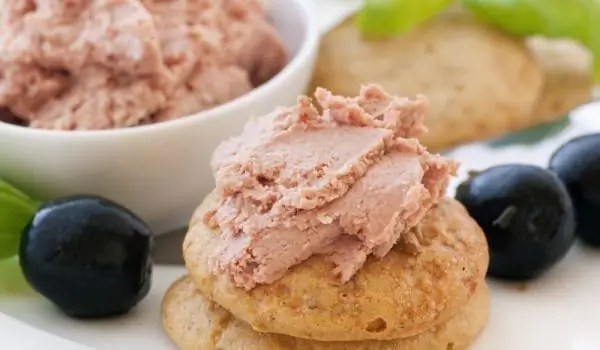2025 Author: Jasmine Walkman | [email protected]. Last modified: 2025-01-23 10:18
We offer you a short trip to an unknown but very culinary country. Estonia is the northernmost of the three Baltic states. It is a flat country on the east coast of the Baltic Sea with many lakes and islands. Estonian is closely related to Finnish, but does not resemble other languages spoken in other Baltic countries.
A typical feature that you can find in Estonians is the strong connection between identity and one's own language. Estonian culture is closely linked to that of Russia and Finland. People can be slow and reserved, as well as irritable and impatient. Nevertheless, Estonians have several amazing and unifying qualities.
The first is nostalgia. It is a constant topic in Estonian journalism, literature and poetry. The other quality that unites Estonians is respect for science and technology.

The cuisine of this beautiful country is very diverse. In it you can find pickled eel, blood sausage and stewed sauerkraut with pork. Various peoples who ruled the region in the past, such as Danes, Germans, Swedes, Poles and Russians, have greatly influenced Estonian cuisine. It traditionally includes meat and potato dishes, as well as many delicious fish specialties along the coast around the Baltic Sea and lakes.
Modern cuisine, as already mentioned, is influenced by other nations. We will now briefly group Estonian cuisine into several sections: cold dishes, soups, main courses and desserts.
We will start with the cold dishes first. At the table of an ordinary Estonian you can find selected meats and sausages served with potato salad or rosolie, a typical dish of Estonian cuisine, which resembles Swedish sillsallad, including red beets, potatoes and herring.

Estonian cuisine also pays homage to small pastries called pirukad, which resemble Russian pies - stuffed with meat, cabbage, carrots, rice and other fillings and often served with broth.
Herring is one of the most common fish on the Estonian table. Smoked or marinated eel, lobster, imported crabs and shrimp are considered a delicacy by locals. One of the Estonian dishes is raim, which is made from Baltic dwarf herring and anchovies.
Popular fish that you will often find on the Estonian table if you decide to visit this country are flounder, perch and white fish.

Now it's time for the soups. In Estonian cuisine, they can be served before the main course, but they are traditionally a part of it and are most often prepared from red meat or chicken, as well as from various vegetables.
Soups in Estonian cuisine can also be prepared with sourdough, fresh or yoghurt. Specific to Estonian cuisine is leivasupp, which is a sweet soup made with black bread and apples and is traditionally served with sour or whipped cream seasoned with cinnamon and sugar.
After looking at the soups, it's time for the main dishes. Black rye bread accompanies almost every dish in Estonia. Instead of wishing you a good appetite, your hosts will tell you to keep your bread.
Estonians really appreciate the great variety of rye bread in their kitchen. Before, the country could not boast of abundance, so if you drop a piece of bread on the ground, your host will ask you to pick it up, kiss it as a sign of respect, and eat it.

Desserts in Estonian cuisine are varied. In it you can find sour, cottage cheese dessert and dagger. You can also try cottage cheese cream, semolina cream and fruit juice and compote.
Rhubarb pies are also revered by Estonians. You can also try sweet sourdough bread, which is often seasoned with cardamom.
Recommended:
Making Homemade Pate - Easy, Tasty And Economical

Homemade bird pâtés , meat, fish or vegetables are a great idea for breakfast, lunch or a festive meal. You can make the home-made appetizer tastier by adding a variety of spices to taste, carrots, onions, herbs, boiled eggs, cream, meat broth.
Dried Apples - Easy And Tasty

Dried fruits are not just a useful alternative to cakes and sweets. They are useful, satiate hunger and last but not least delicious. They do not contain emulsifiers, nitrites, preservatives or colorants. In the process of drying they may lose some of their nutrients, but the valuable trace elements such as calcium, iron and magnesium, as well as pectin in them are fully preserved.
Ethiopia - An Unknown Culinary Destination, A Paradise For Vegans

Ethiopia, also called the land of honey and bread, is quite rich in hitherto unknown culinary temptations and subtleties. If you ask someone in Africa if they find finger feeding rude or uncomfortable, the answers to both questions will be no.
Armenia - A Must-see Destination For Every Gourmand

The Republic of Armenia is a country in Southwest Asia. It borders Turkey to the west, Georgia to the north. It has common borders with both Azerbaijan to the east and Iran to the south. The capital of the country is Yerevan. Armenian cuisine is one of the oldest cuisines in Asia and certainly the oldest in the Caucasus region.
Process The Meat So That It Is Not Only Tasty But Also Useful

Meat is one of the products that are present on our table every day. From it a person receives complete proteins necessary for the construction and repair of tissues. Meat is very well absorbed by the body. In lean meats, the quality of the protein is reduced.

